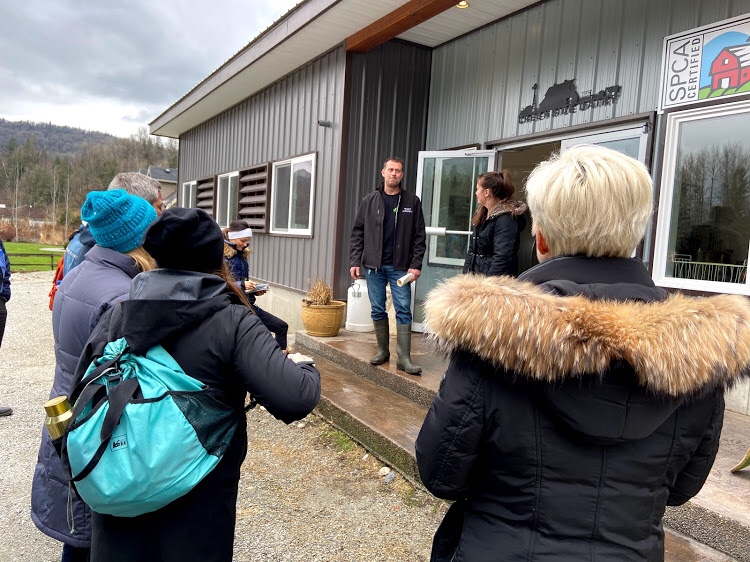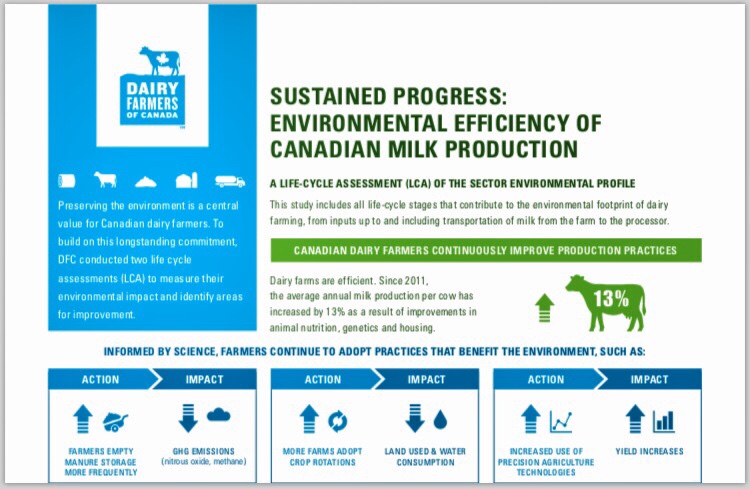About a month ago, the global community of dairy farmers was rocked by news headlines that proclaimed that Starbucks was “ditching dairy” and instead planned to promote plant based beverages “for the environment”.
We were doubly shocked. You see, two weeks earlier, we had been asked if we’d be interested in hosting a farm tour for Starbucks top executives looking to expand their knowledge on dairy farming. The tour facilitator explained that intention of the tour was to learn more about the environmental sustainability of dairy and dairy farming. We were happy to oblige because we truly do love hosting tours; but I must admit that the thought of hosting top execs from a multinational, well-recognized chain was a bit intimidating.
And then we heard the news that Starbucks was planning to phase out dairy. It was confusing to say the least, as we know first hand just how environmentally conscious we are as farmers. But it also made us very aware of the importance of our upcoming opportunity to showcase just how much dairy farmers do to steward and improve our land and environment while producing nutritive and delicious dairy.
On Tuesday, February 11, Starbucks executives toured three farms in the Fraser Valley of British Columbia, and four more just across the border in Whatcom County, Washington State. We spent an hour and a half with this group: we showed them our farm, shared our family’s generational story of dairy farming, described our passion for stellar animal welfare, highlighted how we follow the latest research on animal care, reported on how we have partnered with the University of British Columbia on several research projects, and detailed all of the ways we steward our land to hand it over to the next generation of farmers in better shape than we received it. They asked some really great questions and were genuinely interested in how we farm. We were transparent and open about all aspects of our farm, and I think this helped to plant the seed for the feelings of connection and understanding and camaraderie that developed over the course of the tour.


The group also encouraged us to share our impressions on the sustainability of dairy, so we explained how dairy is a hyper-local product. Milk produced by our cows could be consumed at a Starbucks 20km away from the farm. We mentioned the regulations we are held to regarding manure management and how these protect our environment and aquifers. We talked about how manure is a valuable fertilizer, and how we use our farm’s manure to provide nutrition for the crops we grow to feed our cows. It’s one giant circle of sustainability.


At the end of the tour, we were given an opportunity to ask our own questions. And we didn’t hold back. We thanked them for showing interest in dairy farming but explained that we were very confused about the recent news that Starbucks was phasing out dairy. Since Michael Kobori, chief sustainabilty officer had just started his new position at Starbucks a month earlier, he deferred to Hans Melotte, Vice President of Starbucks global supply chain, on this question.
Mr. Melotte began by saying that Starbucks absolutely has not committed to “phasing out” dairy. He referenced Starbucks CEO Kevin Johnson’s letter, where he stated that one of the 5 environmental strategies to be implemented by Starbucks was to “expand plant-based options, migrating toward a more environmentally friendly menu”. (Find the full text here: https://stories.starbucks.com/stories/2020/message-from-starbucks-ceo-kevin-johnson-starbucks-new-sustainability-commitment/)
Mr. Melotte reiterated several times that Starbucks will continue to serve dairy products. Starbucks is simply adding more options to their menu AND looking at ways to be more environmentally sustainable.
This visit to dairy farms was part of that initiative to learn about sustainability on dairy farms and how Starbucks can encourage and support sustainability initiatives in the global dairy industry. He stated that dairy is a huge part of Starbucks’ business, and this will continue into the future.
By the time the group left, they felt like old friends. At the debrief session with the tour facilitators the next day, Starbucks tour attendees shared how excited they were to connect and engage with farmers and learn more about dairy farming. They were in awe of all the different hats farmers wear: nutrition specialist, soil expert, animal caretaker, business person, etc, etc. They were impressed to learn how valuable dairy farming is to local economies and how closely connected our farms are to Starbucks coffee shops in our communities. It seems the realization that milk from our farms in all likelihood ends up at one of our local Starbucks shops was pretty impressive to them! The group will continue their learning to better understand dairy, its impacts and opportunities, and how Starbucks might play a role to support the industry and farmers. Every individual was extremely grateful to have been able to meet dairy farmers in person to learn from us and, most importantly, experience the human side of agriculture.

We too are so grateful to have had this opportunity to open our farm to Starbucks. We look forward very much to continuing this conversation and building on the relationship we forged on the farm. And in the meantime, we’ll continue to savour our homemade lattes made with freshly ground Starbucks coffee beans and milk from our very own cows. Coffee and real dairy: the best combination. ❤️🥛 ☕️








